You've worked really hard on your business.
You know it has value. You know it can help people.
But you just can't seem to find a way to connect with enough of those customers who could really benefit from it.
Understanding and utilizing the Buyer's Journey in your website's content could be the key to changing all that.
You see, your content should be doing all the work for you. Attracting targeted traffic and seamlessly moving visitors towards your product or service as the solution to their problems. With the Buyer's Journey in mind, you can craft content that does exactly that.
More...
The Buyer’s Journey - An Epic Tale of the Eventual Sale
Ever wonder what happens in a customer's head between...
1
Having a problem
2
Deciding on a solution (that you offer)
3
Buying your product or service
There is a logical progression between the three.
This progression is known as the Buyer's Journey. It involves three stages, the Awareness Stage, the Consideration Stage and the Decision Stage.
These stages detail a customer’s transition from:
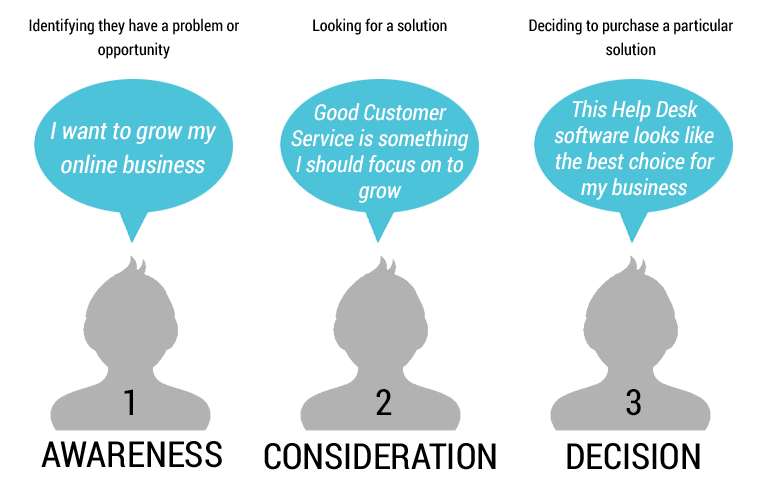
By crafting your content to address what a potential customer is looking for at each stage, you can:
- Attract more traffic
- Seamlessly guide visitors from having a problem to buying your solution
- Attract visitors who are at the end of their journey and ready to buy
- Build relationships with potential customers who are not ready to buy quite yet
The beauty of the Buyer's Journey is a visitor doesn't have to go through the whole journey with you.
They could discover your product or service in the last stage of their Buyer's Journey, the Decision Stage when they're ready to make a purchase, and choose to buy from you instead.
If this is still a bit confusing don't worry, we're going to look at a company who understand the Buyer's Journey so well that they've hit seven figures in yearly revenue by investing in just one form of marketing - beautifully crafted content.
We'll take you through some real world examples of their content, showing you exactly how they've utilized the Buyer's Journey and how you can do the same.
Meet Groove
Groove is a help desk SaaS (Software as a Service) that has grown to over $500K in monthly revenue in just three years.
How?
By understanding the Buyer’s Journey.
Groove has not only made a name for itself in the support field, but they've also become an authority in the startup space.
Why would a customer support company benefit from becoming a household name in startup?
To catch as many people in the first stage of their Buyer's Journey as possible, in the eventual hopes of guiding them toward using Groove.
So how can you craft your content to align with the Buyer’s Journey even a fraction as successfully as Groove has? First, some ground work.
You Need to Know Your Customer to Take Them on a Journey
Creating content shouldn’t be like shooting arrows in the dark; haphazardly throwing material out there, hoping something hits the mark.
In order to attract the right people at the right time, you need to know your customer at each stage of their journey.
Here are three questions to better understand and target your potential customer. Ask the same questions for each stage of the Buyer's Journey.
- What are their concerns and pain points?
- What reason would they have to end up on your site?
- What do they need to know to move to the next stage?
Stage 1 - Awareness
The Awareness Stage involves your target customer before they identify the solution to their problem, and sometimes before they realize they even have a problem to begin with.
You can go as broad as you want at this stage.
Groove’s Potential Customer at the Awareness Stage
- What are their concerns and pain points?
Growing or starting a business, looking for advice on how to run all aspects better.
- What reason would they have to end up on Groove's site?
Looking for general startup advice, learning from other startups.
- What do they need to know to move to the next stage?
Identify that customer service is a point they need to improve on or optimize.
Come One, Come All
Groove’s Startup Blog is great at catching visitors in the Awareness Stage, by delivering quality content that hits some of the most common pain points new startups and small businesses struggle with.
Take a look at some of the Startup Blog content.
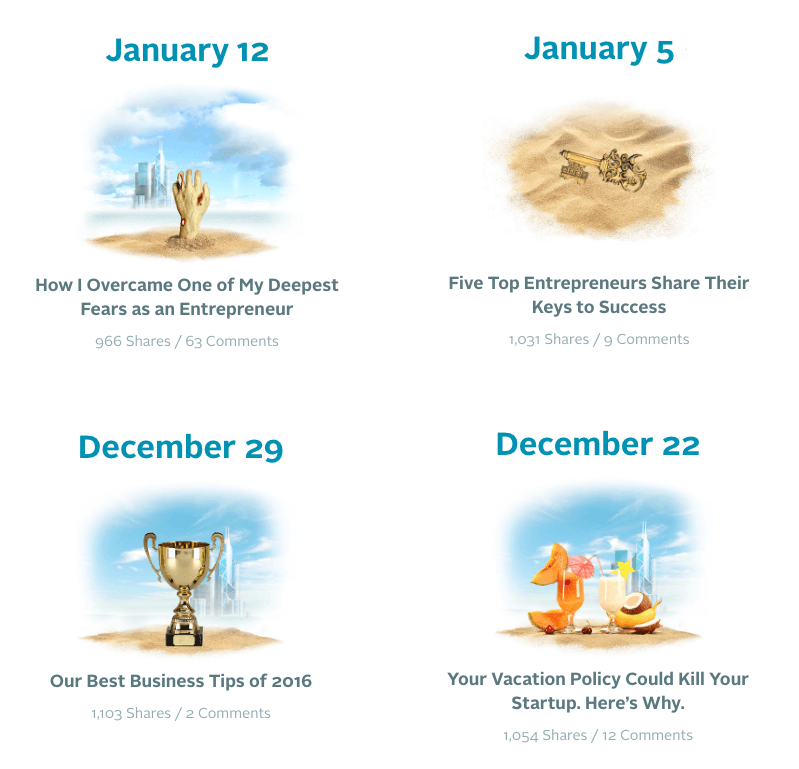
Groove's Startup Blog rarely mentions customer support.
How can a general blog about startups get Groove more help desk customers?
This is where well crafted content comes in. Most of Groove's blog posts serve to build up trust and authority. Every so often though, a post will encourage visitors to move along in their Buyer’s Journey.
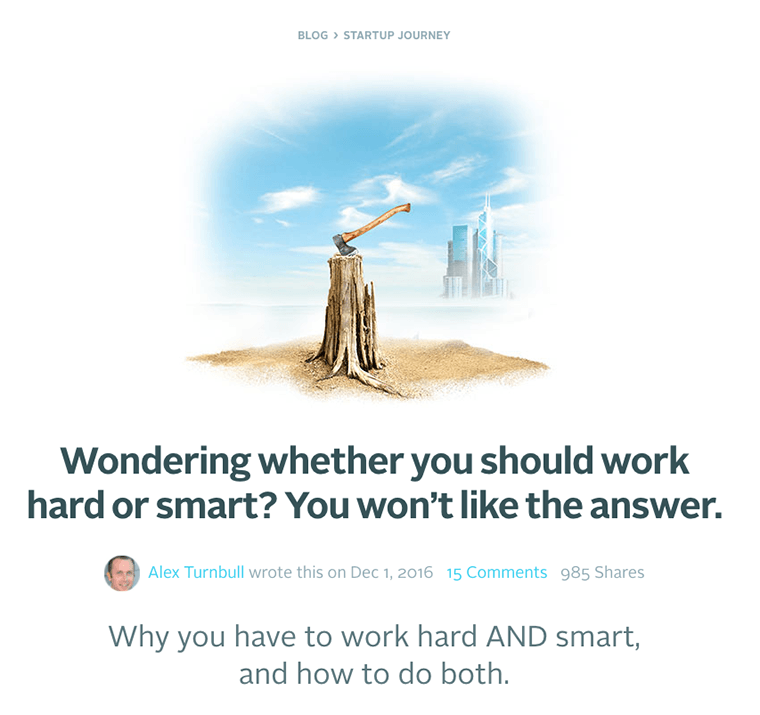
This blog post about optimizing your time and resources is tackling a topic most startups struggle with.
Someone Googling anything related to time management for startups has a chance of ending up on this blog.
The content is very general but occasionally Groove subtly throws in a feature of its software.
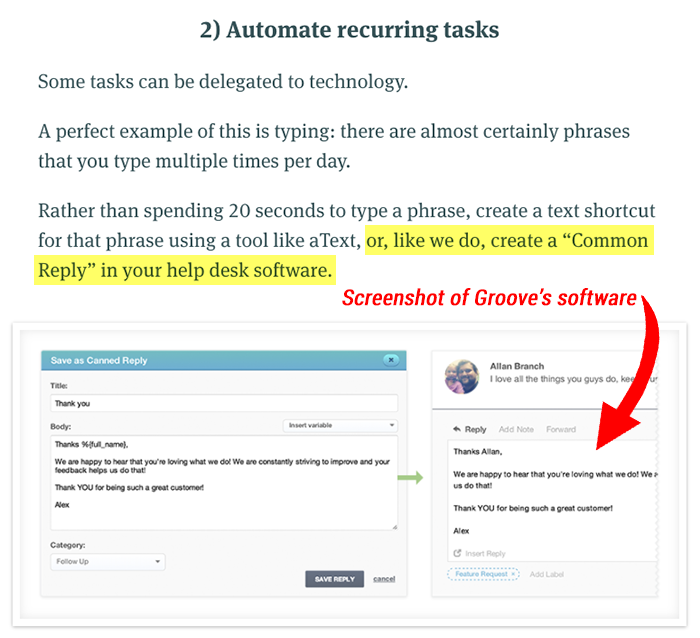
This helps gently introduce what Groove does without being pushy or salesy. The concept of a help desk software has now been introduced in the visitor’s mind.
The main goal of this type of post is to get the visitor’s contact details, so Groove can continue delivering content, building trust and guiding its customer along the Buyer’s Journey.
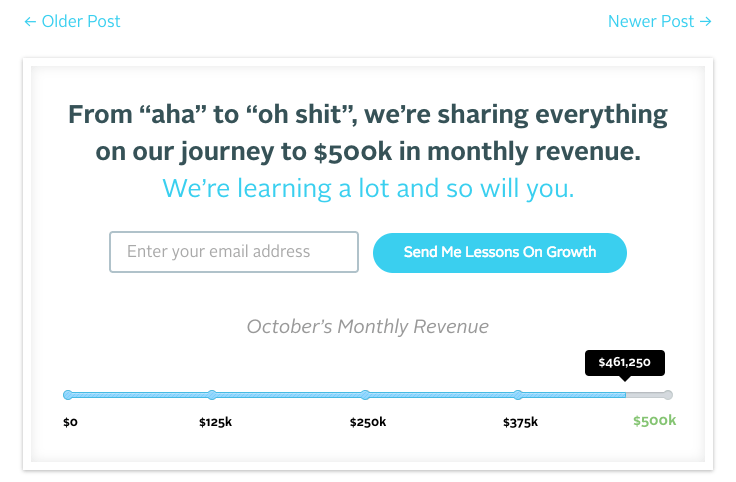
This opt-in offer is at the bottom of most of Groove’s Startup Blog posts, allowing them to move forward as many visitors as possible.
Key Takeaways
While you don’t need to go to the extent Groove has, it’s useful to have at least one broad piece of content to attract those visitors who are still early in the Awareness Stage.
Don’t explicitly mention your product at this stage. Your visitor may not have even identified they have a problem yet.
Always include a step to move your visitor forward in their Journey.
The Gentle Progression
Once a new subscriber has signed up to the email list for Groove’s general Startup Blog, after a series of valuable content is sent out about the general startup scene, they are invited to check out the Customer Service Blog.
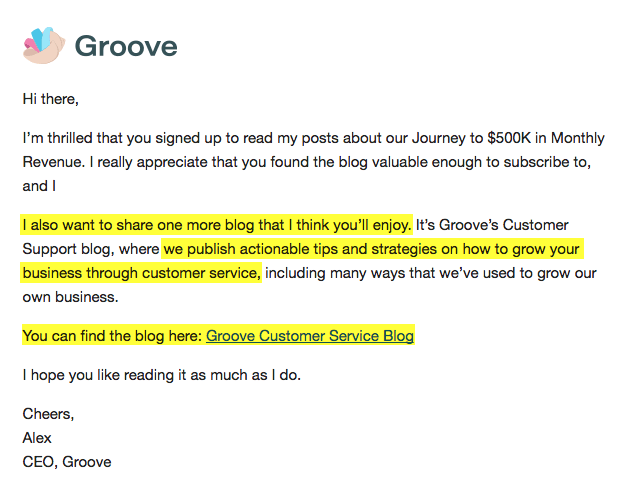
This is a great way for Groove to move its customers a little further along in their journey. The email (ignoring the unfortunate typo) serves to self-segment the startup audience, by identifying those who are interested in improving their customer service.
Subscribers who aren't interested in the Customer Support Blog will continue on the broader Startup Blog. This keeps Groove on their radar. If and when the Startup Blog subscriber decides to delve into customer support, Groove will be the first place they look.
This is typical blog post from Groove's Customer Support Blog.
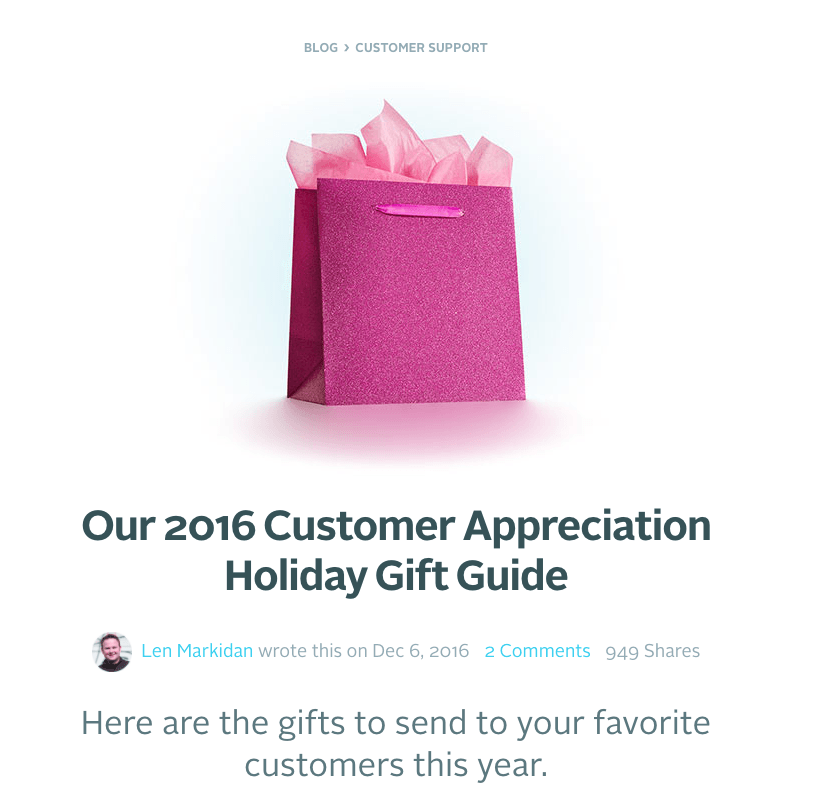
This blog post is still general in nature, and does not mention customer support software at all. This is a great general introduction to the importance of customer service in boosting business.
The Customer Support Blog also creates an avenue for new visitors, more focused on customer service, to discover Groove through search results.
And of course, the next step in the journey is offered on each Customer Support Blog post, in the form of a lightbox opt-in.
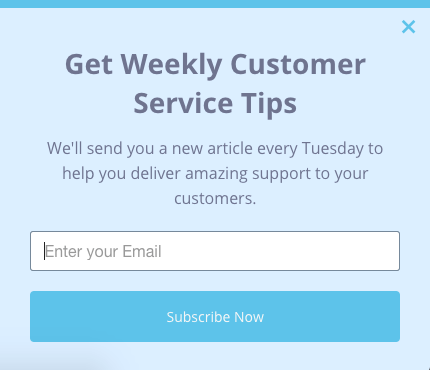
Key Takeaways
Create more targeted content to move subscribers further along their journey, while also attracting new visitors.
Allow your subscribers to self segment, and provide more targeted content to those who indicate they are ready.
Stage 2 - Consideration
In this stage visitors have identified that they have a problem and are considering solutions and solution providers.
‘Considering solutions’ refers to the broader answers to a problem, for example, a startup may be looking for ways to reduce customer cancellations (problem). Possible solutions would be to create better tutorials, provide more monthly bonuses, or to use a better customer support platform.
In this stage you want to guide your visitor to the conclusion that your solution is the best possible solution to their problem. In Groove’s case the solution is to implement a better customer support platform.
Once the solution has been established, you need to point out why your product or service would be best at delivering that solution.
Groove’s Potential Customer at the Consideration Stage
- What are their concerns and pain points?
Wanting to grow their business in the most effective way possible, wanting to improve their customer service somehow.
- What reason would they have to end up on Groove's site?
Searching for ways to increase customer service/happiness/retention, or searching for specific customer support solutions.
- What do they need to know to move to the next stage?
More about why good customer service is important and needs to be done well, content describing why specific help desk software is the best way to improve your customer service and support, information on Groove's SaaS solutions, including what features and benefits it offers.
You Need This Solution
Case Studies are a great way of proving the effectiveness of a particular solution.
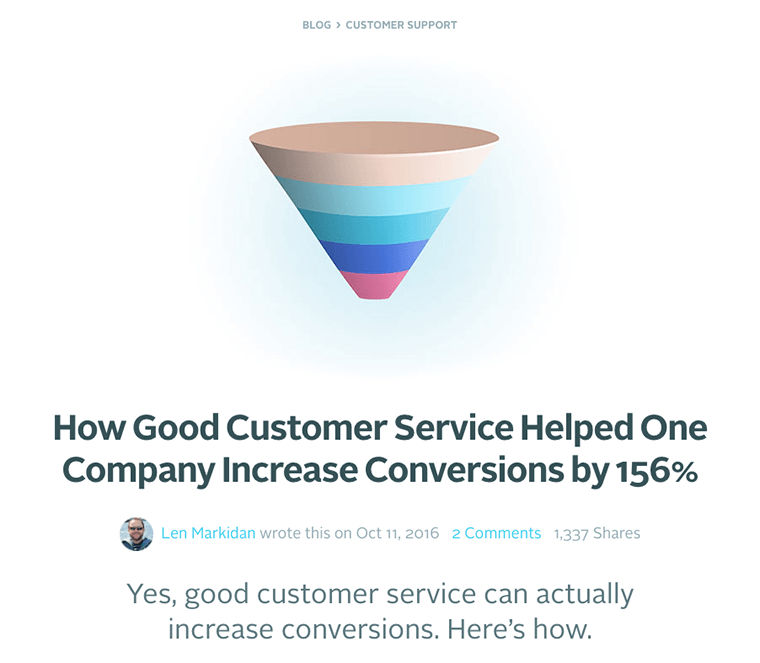
The title of this post draws anyone interested in increasing conversions or improving their customer service. It points to help desk software as the real hero, showing cold hard data on how effective help desk software can be at increasing conversions.
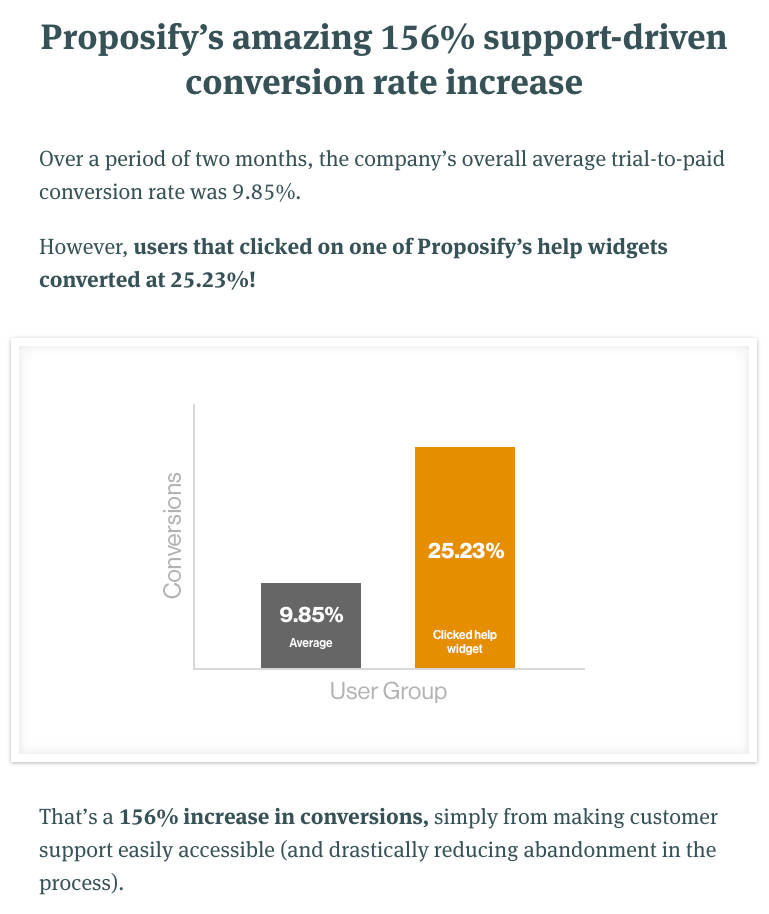
Certainly after reading this blog post, you can’t help but be left with the impression that investing in help desk software is one of the best ways to increase your conversions and improve your customer service.
Key Takeaways
Case Studies are a great way of showing the solution you provide can get the desired results.
Doing case studies with companies that serve a similar audience (eg. companies that also serve the startup community) will increase your chances of being discovered. They are likely to share the article with their own audience.
All The Essentials In One Place
Groove has detailed features and benefits, technical specifications and integrations all in one place, easily and intuitively accessible from its homepage. This allows any prospective customers to discover more about Groove’s solution.
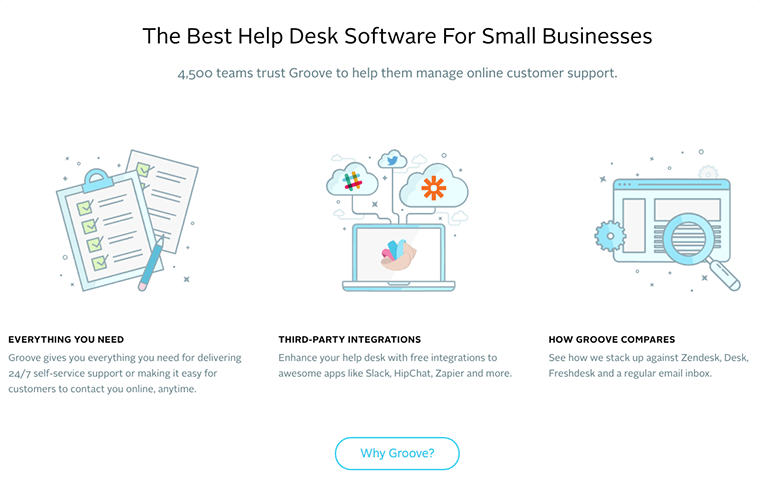
Click to enlarge
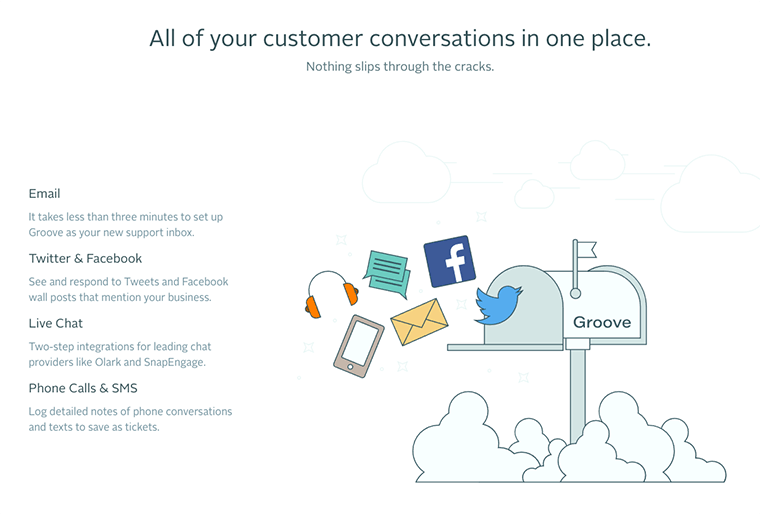
Click to enlarge
The visitor is left with an understanding of exactly what the software does, and is able to clearly establish if the solution fits their needs and is worth looking into further.
Key Takeaways
It's better to give all the crucial information early, so you don't waste time and effort trying to convert those customers who were never the right fit.
Make it easy for your visitor to discover all the things that they’ll like about you.
Technical specifications and integrations are important to establish up front.
Stage 3 - Decision
In this stage visitors have identified they need to purchase a particular solution, but are still trying to validate their decision and compare the competition.
Groove’s Potential Customer at the Decision Stage
- What are their concerns and pain points?
Wondering if Groove's software is the right solution to their problem, and if they are making the right investment or not.
- What reason would they have to end up on Groove's site?
They have established they need a help desk solution and are making the final decision on which company is right for them.
- What do they need to know to move to the next stage?
How Groove compares to other companies, more detailed insights into the functionality of the software, an idea of that it’s like to use the software.
How Do You Compare?
Comparison pages are great for catching visitors in the final stage of their Buyer’s Journey. They’re ready to invest in a solution provider, and doing final checks to make sure they are making the right choice.

This type of content can be incredibly lucrative, because the visitor is ready to make a purchase.
A new visitor can stumble upon one of your comparison pages in the process of researching your competition. They’ve gone through most of the Buyer’s Journey on their own, or with another company, and you have the power to sweep them up in the final stages of their decision.
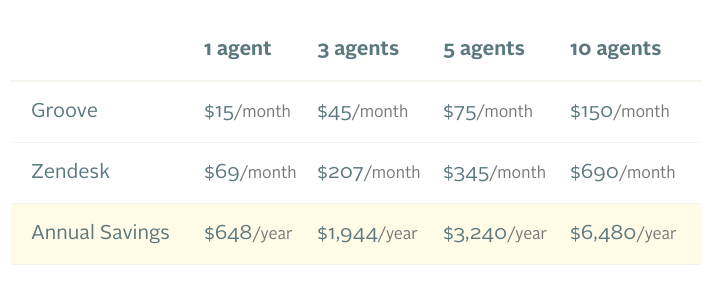
Highlighting the elements that make your product or service the obvious choice is the secret to creating great comparison pages. Try to stick to the facts, and make the comparisons clear and easy to digest by using visual elements such as tables and graphs.
As you can see in this example, Groove is the obvious choice when it comes to price. There’s no commentary necessary, the numbers speak for themselves.
Key Takeaways
Comparison pages are a high priority because of the lucrative stage you can catch customers in, and the ability to draw traffic that’s ready to buy.
Try and keep your comparison pages as unbiased as possible, but clearly highlight the points where your product or service dominates.
Try Before You Buy
If you subscribe to any of Groove’s lists, eventually you’ll receive this email.
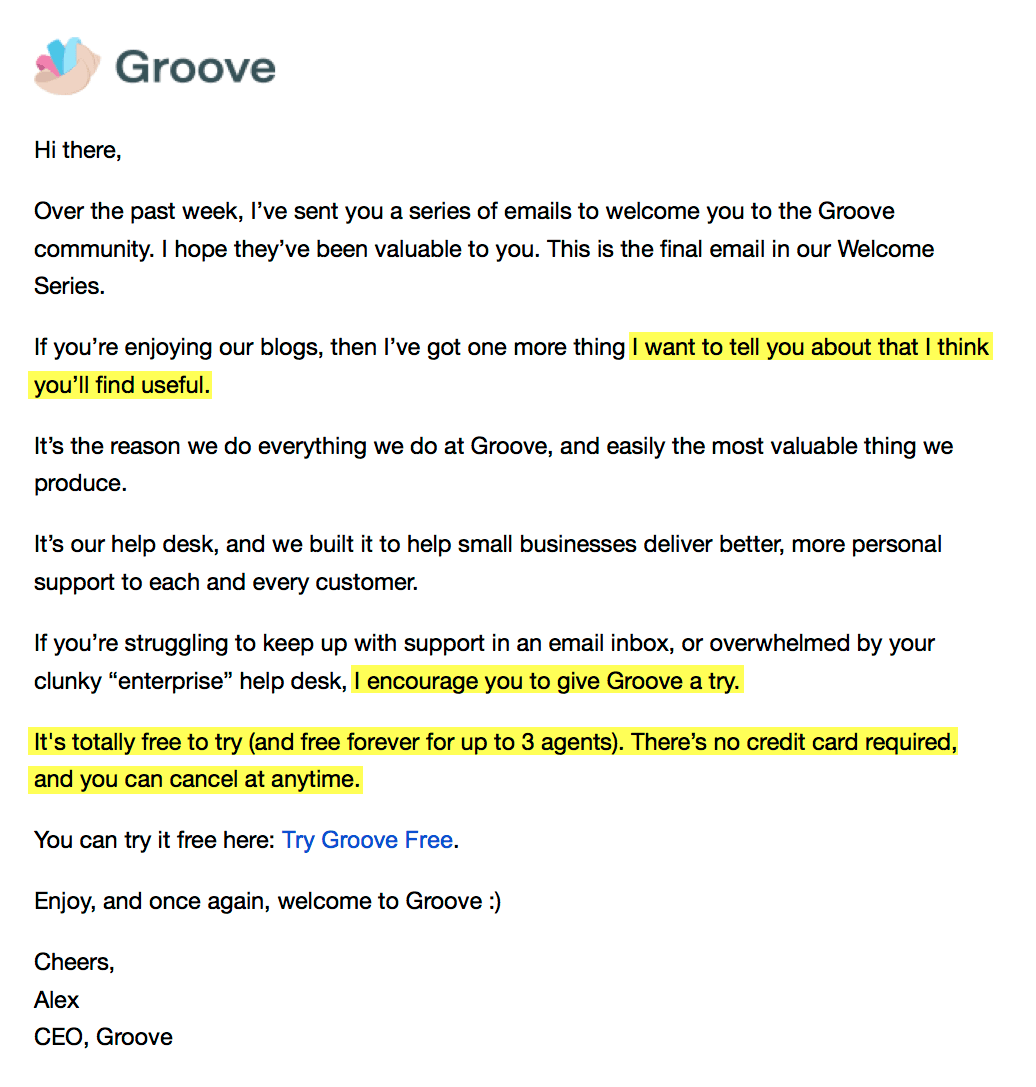
Groove offers several opportunities for its visitors and subscribers to try the software for free.
This serves to catch people who are further along in their Buyer’s Journey, by giving them exactly what they need to progress to a purchase.
While not technically ‘content’, offering a free trial or a way for your customer to look inside your product or service is a very powerful way of moving them towards a purchase. In this stage, they’re ready to buy from someone, so the more content that validates you're the right choice, the better.
On the homepage and pricing section of Groove’s website the free trial is also heavily promoted.
Not only does Groove offer a free trial of the premium version of its software, they also offer a free account option with limited features.
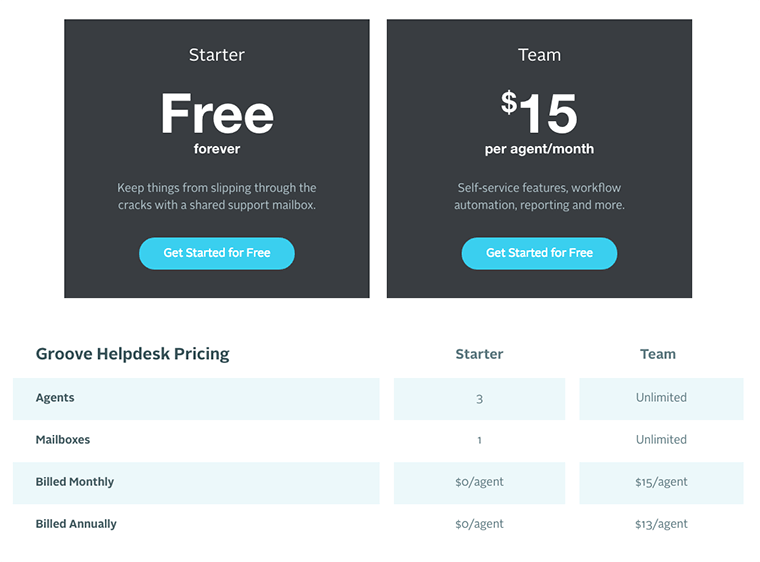
The trial and free account options remove almost all barriers to moving forward with Groove.
Groove makes it very easy to get to know its software. When faced with that, or a product they've only seen a sales page for, customers are far more likely to choose the former.
Key Takeaways
Remove any questions or barriers a visitor may have leading to the purchase decision.
Even if you can't set up a free trial for your product or service, provide as much information as possible about what it’s like after purchase. This information can be presented in many forms, including live demonstrations, screencast videos, and detailed customer testimonials.
Insider tip: If you need in-depth testimonials Thrive Ovation is our all-in-one testimonial management plugin. Use these targeted questions to get quality responses from your customers.
Utilizing the Buyer’s Journey in Your Content
Staring at this massive list of perfectly designed content can get a little overwhelming, especially if you’re just starting out.
It’s important to remember this content was slowly built up over time.
It's also important to remember the money is at the bottom.
Focus on catching visitors who are further along in their journey and more likely to make a purchase. To do this, create content for the stages towards the end of the Buyer’s Journey first, and then build your way up to the Awareness Stage content.
Action Steps
- Ask yourself the customer questions for each stage of the Buyer’s Journey. This will help you identify what type of content you should be creating.
- Create a least two pieces of content for the Decision Stage. This can include tutorials, testimonials, free trials, comparison pages and demos.
- Create at least two pieces of content for the Consideration Stage. This can include case studies, FAQ's, details of inclusions and features, white papers, in-depth testimonials and reports.
- Cast that net! Now you can start creating content for your Awareness Stage.
So what are you waiting for, start creating. Before you know it, you'll have beautifully crafted content worthy of its own Thrive Themes blog post!
If you have any questions or comments please leave them below.
Note: Groove has cast its net extremely wide with the Startup Blog. It’s important to note they do have another use for that blog. Groove has just recently launched a paid content marketing course. Targeted at the startup and small business community, it’s another way for them to profit from the massive following they’ve built up with the blog. This helps capitalize on visitors who wouldn’t necessarily end their Buyer’s Journey with Groove’s help desk software.



A lot of work was put into this article and it shows. Excellent job. Thank you.
Thanks Robert, yeah this one sure did take a while!!
Massive article, really helpful although that first opt-in form is 100% copy from other website 🙂
Did Neil Patel came up with that first or did Groove? I too remember seeing that “every mistake from “oh shit” to $$” on both sites.
Yeah I noticed that when I was on Neil’s site the other day. Apparently Neil openly mentions he copied that opt-in from Groove.
Excellent article and very helpful for a small business owner like myself. The three stages are great to keep in mind while I am creating content. Thank you!
Hi Jennifer, it’s definitely useful to have some sort of backing or guideline when creating content, otherwise the whole thing can get a bit out of hand! Glad this helped.
Match-made in Heaven! My two favourite blogs (Groove + Thrive) in one blog post! 😀
I love how you structure these case studies. Principle –> Example –> Key takeaways. I always save them to Evernote AND print them in hardcopy for reference.
Quick question: Stephanie, do you have a marketing background? How did you get introduced to the esoteric world of digital marketing? Loving your articles so far. :))
PS: PLEASE link to your Ovation plugin every time you mention testimonials. I’ve been a Thrive member for a year now, but I only discovered Ovation accidentally last week.. while looking into one of your competitors’ testimonial management solutions.
Alp. My comment guardian angel!
Thank you for pointing that out, I’ve added a link to Thrive Ovation in the post. It’s the curse of knowledge once again, when you’re working with it everyday it’s hard to remember some of our readers may not have come across certain plugins yet.
As for the structure, very well observed. We’re big on the repeating post. We actually have a Thrive University course that takes you through the process we use when putting together a blog. Lesson 2 covers the repeating structure. Check it out if you haven’t already, it’s got some really valuable information in there.
As for my background, like most marketers, I just kind of fell into it. Started out marketing for my own business, loved it, became a little bit obsessed and it all snowballed from there…
Thanks for the support and the the helpful tips 🙂
This was a really great article, well put together. I also follow Groove. They have great content.
Groove had the “aha to oh shit” as their opt in for a long, Niel Patel borrowed it from them. He mentioned it somewhere on many of his blogs. I remember reading it.
Hi Kelly,
Thanks for clearing the whole ‘who copied who’ question up!
Excellent information. Thanks for being so thorough with these case studies
Thanks for taking the time to read them Christy, I know this one was a bit of a mission!
Really impressed by the content on Thrive!
I have always been product oriented and never did much marketing. Reading the posts and the Thrive University content clarifies many of my past frustrations of having a perfect product and so much fewer customers than could have benefited from that product.
Hi Jaap,
Thanks for the comment. It’s true, no matter how amazing your product is, if people never come across it, none of that matters. It’s a shame too, I’ve seen some fantastic products get left behind because of a lack of marketing.
Hi.. I applied many concepts from your last post website review “…narrowing target audience” (I used Thrive Leads plug in), and now I found another concept “the consumer’s evoke set and the 3 stages of the consumer decision process that you mentioned before” to apply using Thrive leads plug in again. Thank you for this marketing class and for telling me how to apply my Thrive Theme products to my websites. Bye, bye……
Hi Juan,
It’s really great to hear these tips are immediately actionable for you. I wish you all the best for the website. (sounds like you’re doing all the right things!)
Wow Stephanie! Really well thought out analysis of our buyers journey 🙂 You mapped it out perfectly. Thanks so much for taking the time to analyze, write and share this with your audience.
Rock on!
Hi Alex, Thanks for leaving a comment! We’re a big fan of your stuff here at Thrive, and also the transparency you bring to the whole process. I hope we did Groove justice!
Hey Stephanie — great post!
And big thanks for taking such a detailed look at our content strategy. You nailed it with an impressively actionable analysis.
P.S. thanks, too, for spotting the typo. Fixing now 😉
Hi Len,
Thanks for commenting! We love everything you’re doing over there. Glad you got the typo fixed (I was going to email you about that). I’ll swap the picture in the post out for the non-typo version 😀 Keep up the amazing work!!
I just discovered Thrive, about to sign up (started out looking for lightbox plugin, found much more :). Great article, well done.
Thanks Jeff, I hope you enjoy the tools 🙂
What a fantastic article Stephanie – well done and thank you!
Very helpful article with huge amount of value! Thank you for sharing.